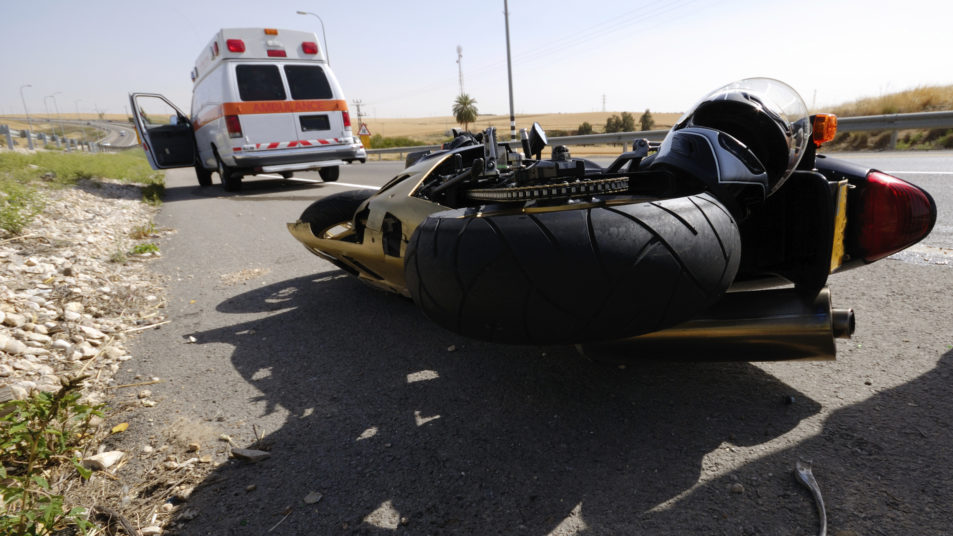Motorcycles and Lane Splitting: Liability After a Crash
California is home to some of the country’s most beautiful thoroughfares and scenery. This makes it very attractive to motorcycle riders from across the country. California also has relatively relaxed motorcycle laws. It is the only state in the country that does not expressly forbid and prohibit lane-splitting. Rather, lane-splitting is more of a gray area and discretion is left in the hands of California Highway Patrol (CHP).
Earlier this year attempts to adopt lane-splitting regulations was unsuccessful. This was thanks in large part to pushback from the motorcycle community. The ambiguity about lane-splitting causes confusion about liability if a motorcycle accident occurs. When is lane-splitting permissible? When is lane-splitting dangerous? Should the driver of the car(s) and/or truck(s) involved in the accident be held liable if a motorcycle was riding between two lanes of traffic? Should riders have an extra responsibility if they choose to navigate through traffic between lanes?
Lane-Splitting: Safe Alternative for Motorcyclists?
It may be helpful to understand why California does not formally prohibit lane-splitting. In states where lane-splitting is prohibited liability is more easily determined. If a motorcyclist breaks the law and splits lane – he or she is likely to be held accountable for that decision in the event of an accident. In California, however, the lack of formal guidelines makes an allocation of liability less clear.
A UC Berkeley study, as reported by the American Motorcyclist Association, found that “motorcyclists who split lanes in heavy traffic are significantly less likely to be struck from behind by other motorists and are less likely to suffer head or torso injuries.” The study, which reviewed data from 6,000 motorcycle-related traffic accidents between 2012 and 2013, found that the injuries to the 997 motorcyclists involved in those accidents were significantly less severe than to motorcyclists who were not engaged in lane-splitting at the time of the crash. The study found that traffic congestion was one of the leading causes of motorcycle accidents. Engaging in the practice of lane-splitting – when done safely – can help to reduce the chances of being involved in or seriously injured in an accident.
When Is Lane Splitting Safe?
According the UC Berkeley study, lane-splitting can reduce the likelihood of being involved in a motorcycle crash. However, lane-splitting must be done safely. Lane-splitting may be safe when:
- Congested traffic is not exceeding 50 MPH; and
- Motorcyclists do not exceed the speed of other vehicles on the road by more than 15 MPH.
Liability After a Lane-Splitting Crash
California follows the concept of pure comparative negligence. This means that after an accident anyone who is at least partly at fault may be held liable for resulting damages. The fact that California uses comparative negligence may also be another reason for their hesitance to prohibit lane-splitting.
Rather than outlaw a measure that may give motorcyclists an added layer of protection on the road, California may have decided that pure comparative negligence will help to divvy up and assign liability if accidents occur. Motorcyclists who take the risk of splitting lanes must do so in a safe manner – failure to do so properly may result in liability they may not have incurred had they stayed put in a designated lane.
When lane-splitting is the cause or one of the causes of an accident it is likely that most – if not all – of the liability will rest with the motorcyclist. If you are a motorcycle rider who in an accident while splitting lanes you must be able to prove that the other driver(s) involved are also partly to blame. Proving that other drivers were at-fault will require showing that the rider exercised extreme care and precautions while lane splitting. Indications of safe lane-splitting include:
- Riding at a low rate of speed;
- Riding in a straight line between lanes;
- Not weaving between other vehicles in traffic;
- Wearing reflective gear; and
- Using the horn and lights to warn other vehicles of your presence.
Completing the California Motorcyclist Safety Program is also helpful. Proving that other drivers were at-fault will also require evidence that the other drivers were negligent. Negligence may include:
- Speeding;
- Abrupt lane changes;
- Using a cell phone or other mobile device;
- Distracted driving; or
- Driving under the influence of alcohol or drugs.
Experienced Motorcycle Crash Attorneys
Motorcycle accidents often inflict significant, life-altering injuries on riders. An experienced motorcycle crash attorney may be able to help injured riders to recover compensation. This can help to cover the costs for medical expenses, rehabilitation, nursing care, lost wages, and more. If a motorcyclist was injured while lane splitting it is important to begin an investigation into other possible causes of the crash. An attorney understands the information that will help a crash victim and has access to specialists who can help to shed light on other causes.
To learn about how you may be able to recover compensation after a motorcycle crash – even if you were splitting lanes – a personal injury attorney in your area today. Even though lane splitting is not illegal, it does carry with it a burden if something goes wrong. The right attorney may be able to help you shift some of this burden to other parties who were involved.


